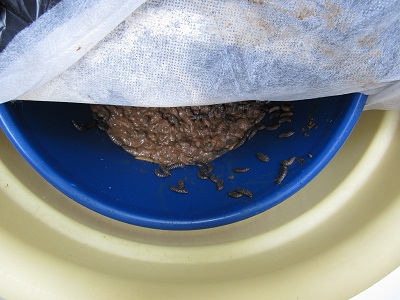Poor sanitation Uganda
Background
Manure management does always pose a risk for disease transmission, either to other animals or to humans. Several zoonotic diseases (infect both animals and humans) are commonly found in manure, e.g. Salmonella, Chryptosporidia, Ascaris. Animals kept in the city produce manure that in many cases does not have a natural utilisation, as it would have on farms where the manure is returned to the land as fertiliser, either directly or after some storage. Currently in Kampala there are three main flows of the manure, all three equal in size: one third is used for local crop and grass production; one third is bagged and sold as fertiliser; one third is left where it was dropped. All three manure management solutions involved a risk for disease transmission, to animals as well as humans. By adding a treatment step that removes the potential pathogens, a fertiliser, more accepted and safer than the currently available one, could be produce. The manure is a valuable source of nutrients that can have a great impact of the poor over-harvested urban soils.
This project investigates methods for removing all potential pathogens from animal droppings, while maintaining, or improving, its commercial value.
Treatment alternative 1: Black soldier fly larvae treatment
The black solider fly, Hermetia illucens L. (Diptera, Stratiomyidae), is a tropical fly found in warmer regions worldwide. Its larvae can consume great amounts of organic waste; their feeding activity lead to a large reduction in volume as the material is accumulated into larvae biomass. In the last larvae stage the so-called prepupae crawl out of the waste to find a dark and dry place to pupate (Figure 1). The prepupae are high in protein (around 40%) and fat (~30%) and have been shown to be an excellent alternative animal feed. The self-harvesting properties of the prepupae make this system an inexpensive alternative for animal feed production.

Figure1. Black soldier fly larvae crawling out of waste material (foto Cecilia Lalander).
Treatment alternative 2: Vermicomposting
Common red worm (Eisenia Foetida) has long been known for their ability to consume organic material and transform it into humus like soil amendment. Worms can reduce dry mass up to 30% and at the same time worm biomass can be harvested and processed into valuable animal feed as they consist to 60–70% of protein.
Links: Food security Kampala, Uganda